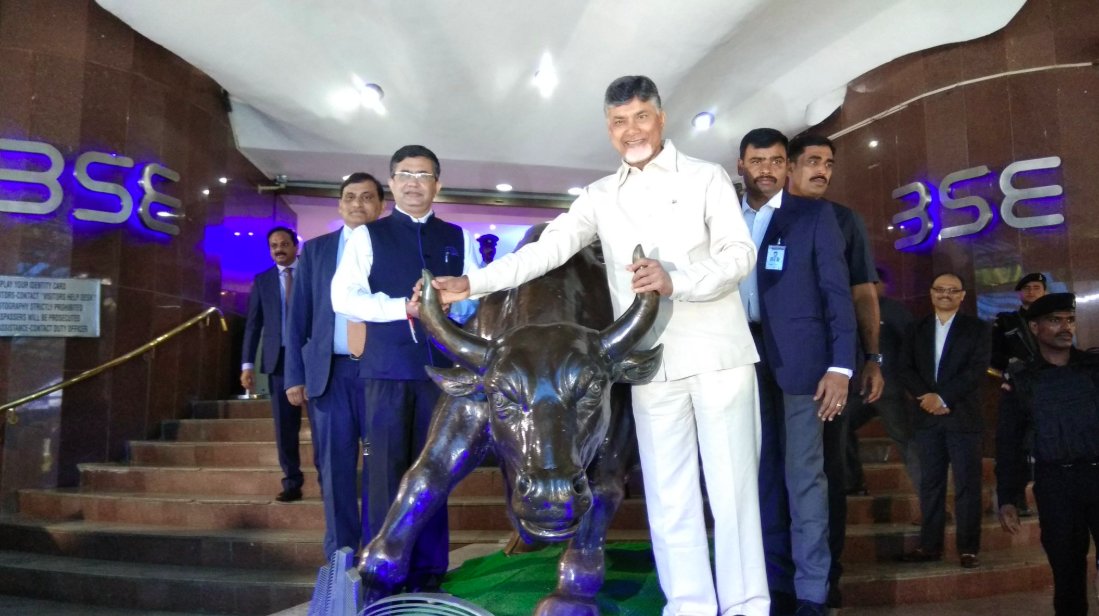
As part of fund raising strategy to build Andhra Pradesh’s capital Amaravati, the state government has selected the capital markets with the listing of bonds issued by AP Capital Region Development Authority (AP-CRDA) for Rs 2,000 crore.
Despite the fact that the bonds were issued for Rs 1,300 crore, they were oversubscribed by 1.53 times, thus raising Rs 2,000 crore of funds.
Addressing the event, Andhra Pradesh Chief Minister N Chandrababu Naidu said his government foreseen an investment $2-4 trillion for the development of Amaravati.
“Our Infrastructure development plans need USD2-4 trillion. Today the Centre is estimating only USD1 trillion for infrastructure development. But for Amaravati, we do not see any problem in mobilising even $2-4 trillion,” Naidu said.
Mr. Naidu further added his government always adopted innovative approaches to fast-track development and opened up new funding options for the development of Amaravati.
“The success of Amaravati Bonds 2018 reflects the investor confidence in my government and the development of Amaravati,” Mr. Naidu said.
Here’s the list of crucial pitfalls
Regardless of the response the bonds received, there have been serious pitfalls raised over this expensive borrowing practice.
The fact of the matter is bonds in general are branded to have a high Interest Rate and for a state that is already cash-strapped, tuning the debt may turn out to be a higher drain for a state that is already under large debt.
Considering the interest rate, the bonds AP-CRDA are being issued is substantially high.
Have a look at the recent cases:
Greater Hyderabad Municipal Corporation (GHMC) recently issued bonds which were promised for an interest rate of 8.9%.
In the same way, Pune Municipal Bonds were issued at an interest rate of 7.59%.
Nevertheless, in the event of Amaravati bonds, the interest rate to be paid is as high as 10.32%.
Possibility of generating revenues:
The resources raised through the bonds are primarily being utilised for infrastructure projects and based on the practical understanding these sorts of projects do not guarantee generating adequate returns in the near future.
Additionally, as a backer, if the state govt is obligated to repay the debt, it will put extra load on Andhra Pradesh’s economy.


































































































